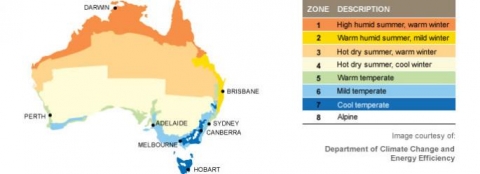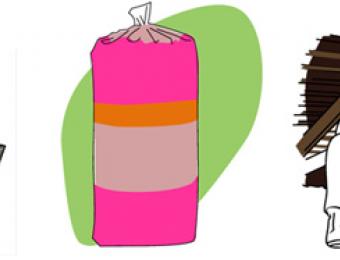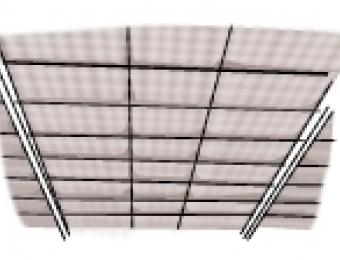
Generally speaking, the types of insulation you'll need to use will come down to the regulations that exist where you live. The Building Code of Australia (BCA) includes regulations for insulation that determine what levels are needed in different parts of your home, based on which climate zone you live in. Of course, how you arrive at the required R values is largely a matter of choice, but there are some obvious differences in what sort of insulation is appropriate in different climates.
How to insulate houses in cold climates
Houses in places with constantly cooler climates (like Hobart) will benefit more from bulk insulation like glass wool or rock wool batts, or loose-fill cellulose. Keeping the heat in is the main goal in areas like this, and good bulk insulation will do a lot to help keep your heating bills down. The thermal envelope in your home can be further improved and protected using air and moisture barriers, and by ensuring that all gaps are sealed properly.
How to insulate houses in temperate climates
Houses in temperate climates like those in Sydney and Brisbane have to strike a balance as far as insulation goes, as half of the year will be spent at one or the other extreme. Combination-types of insulation like foil backed batts will work best for areas like this, with other considerations coming into play around ensuring that the reflective backing has enough space to be effective.
How to insulate houses in tropical climates
In tropical areas like Cairns and Darwin, insulation's biggest role throughout the year is to reduce heat gain. Reflective insulation will work very well for this. Anything that can prevent your home from holding and retaining heat will be of benefit here, and ensuring that the reflective foil has a sufficient air layer to operate in will be of prime consideration.
Special considerations and circumstances
In areas that experience extreme temperatures, whether it's snowy, mountainous terrain or the flatlands of the central Australian desert, you'll need to make extra allowances for the climate type. Extra ventilation may be required, for example, to allow built-up heat to escape from a ceiling space, or an additional layer of thermal protection like a building wrap might be needed to keep the warm air in and the cold draughts out.





